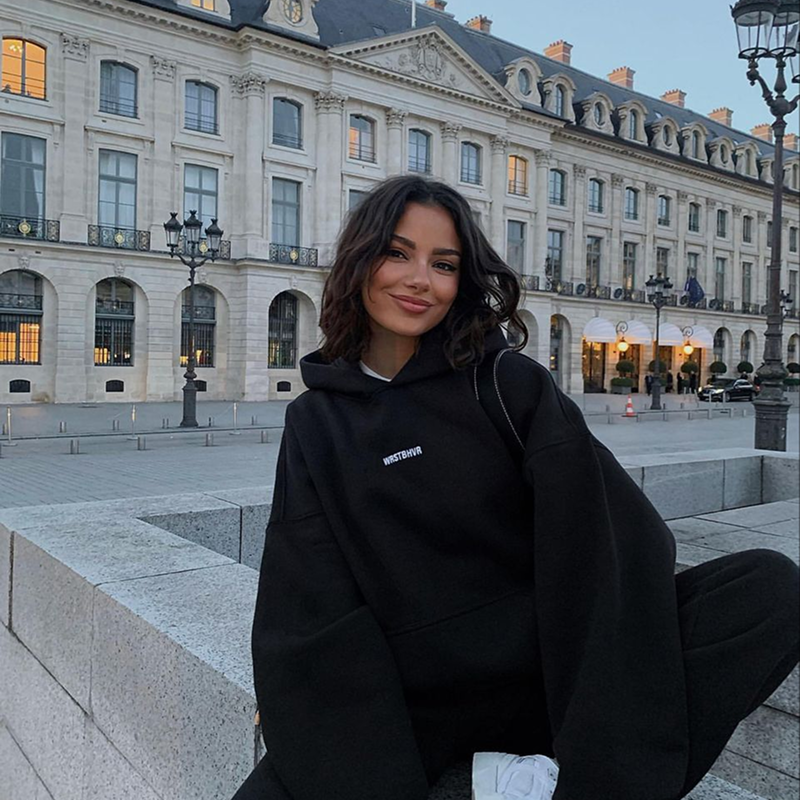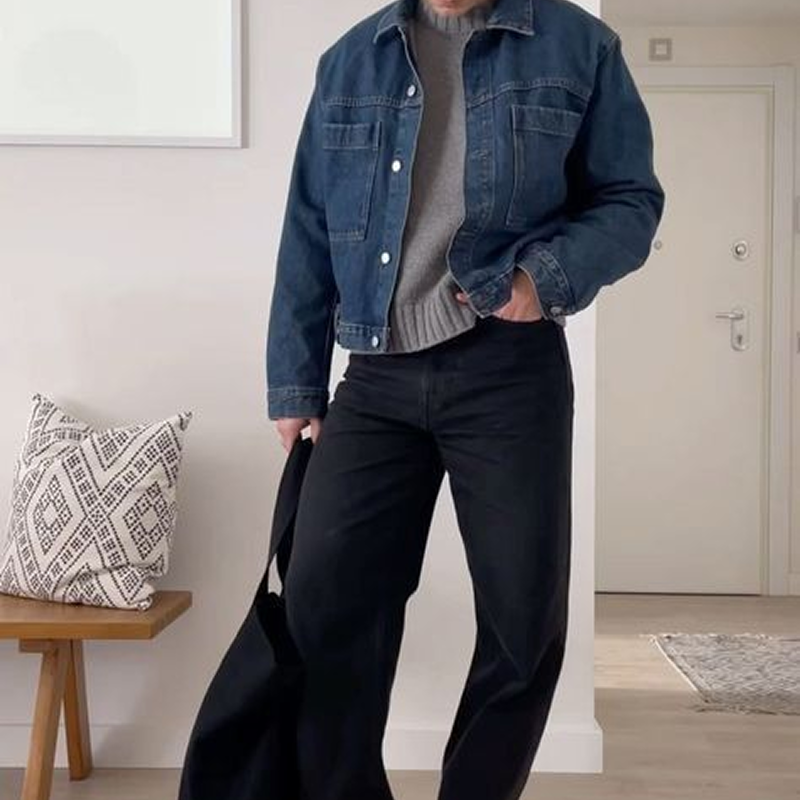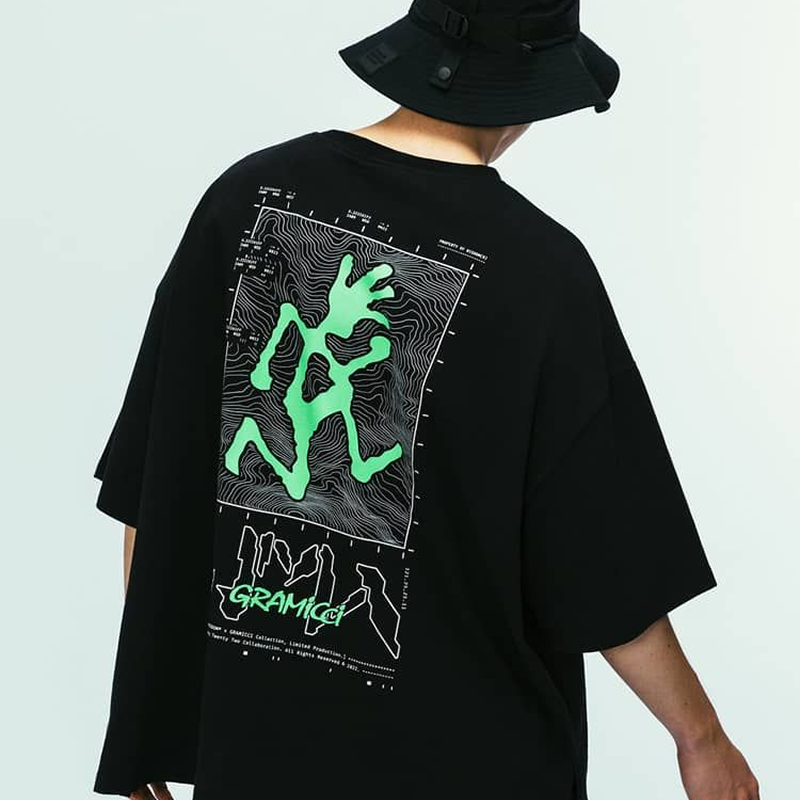There’s a strange kind of silence that comes when someone puts on a hoodie.
It’s not about hiding. It’s about claiming space—quietly. No logos screaming, no need for validation. Just that soft fabric draped over the shoulders, the hood framing the face like armor. It’s rebellion, comfort, anonymity, and identity—all stitched into one.
The hoodie has never been just a piece of clothing. It’s always been a language.
I. The Rise of Soft Power
In a world obsessed with status symbols, the hoodie stands out by saying less.
It doesn’t shout. It hums—low, grounded, confident. It’s the antithesis of the suit, the counterpart to the tie. It’s what happens when style stops trying too hard and starts breathing instead.
Streetwear pioneers like Jerry Lorenzo, Virgil Abloh, and Nigo redefined the hoodie not as a slouchy weekend thing, but as the nucleus of modern menswear. They took what was once a symbol of the underground—skaters, rappers, rebels—and elevated it with craftsmanship, structure, and silhouette. Suddenly, the hoodie wasn’t just “casual wear.” It was cultural currency.
In 2025, that evolution has fully matured.
Luxury houses—Loewe, Jacquemus, Bottega Veneta—craft hoodies in cashmere blends and organic heavyweight cottons. The modern hoodie has form, weight, and substance. It’s soft power incarnate.
II. The Streetwear Soul
At its core, the hoodie is streetwear’s most sacred object.
It bridges subcultures: hip-hop, skate, graffiti, basketball, techwear, even minimalism. It’s a shared symbol across worlds that rarely overlap. A rapper in New York and a barista in Copenhagen might wear the same gray hoodie—but for completely different reasons. That’s the magic.
Streetwear has always been about emotion.
Not luxury, not exclusivity—emotion. The hoodie embodies that. It carries memories: your first concert, a heartbreak, a late-night drive with the windows down. It’s personal, lived-in, and human. That’s why streetwear purists still prefer their hoodies slightly oversized, faded, the cotton a little rough around the edges.
When the fashion industry tried to commercialize “street,” the hoodie refused to lose its soul. It adapted—but never forgot where it came from.
III. Anatomy of Modern Ease
A perfect hoodie isn’t just about comfort. It’s about proportion.
The fit tells the story: dropped shoulders, a slightly boxy torso, a hood that sits firm but relaxed. The hem shouldn’t hug the waist—it should float around it. Every designer interprets these details differently, but the essence remains the same: ease without carelessness.
In today’s design language, the best hoodies follow three aesthetic codes:
- Form through Fabric – Heavy French terry, brushed fleece, loopback cotton. These materials give the hoodie structure while preserving softness. They drape like a tailored jacket when done right.
- Volume through Cut – The silhouette has shifted from slim to relaxed, from fitted to flowy. Modern hoodies echo architectural shapes: squared shoulders, cropped hems, clean lines.
- Silence through Detail – The best hoodies don’t need logos. Their texture, stitching, and seams speak volumes. Understated tones—sand, charcoal, moss, slate—project quiet luxury.
The result? A garment that feels like a whisper but looks like a statement.
IV. Layering the Language
The hoodie thrives in layers.
It’s the perfect middle child—nestled between a tee and a jacket, balancing softness and structure. Layering a hoodie is like composing music; it’s about rhythm, density, and tone.
Here’s how the fashion world plays with that composition in 2025:
- With a Blazer: The contrast between tailoring and fleece is electric. Think a dark gray wool blazer over a cream hoodie. That’s the new creative-class uniform—elevated but not uptight.
- With a Trench or Overcoat: The long silhouette amplifies the hoodie’s volume. Neutral-on-neutral combinations—camel over beige, navy over ash—create effortless dimension.
- With Technical Layers: In the techwear universe, hoodies pair with shell jackets, tactical vests, and cargo pants. The look is urban armor—functional minimalism with an edge.
- With Nothing Else: Sometimes, the hoodie stands alone. A heavyweight piece with sculptural drape can be enough. Pair it with cropped trousers or wide jeans, and let texture do the talking.
The hoodie’s true strength lies in adaptability. It’s democratic yet directional. It doesn’t fight with other garments—it completes them.
V. The Emotion of Texture
Fashion today isn’t just visual—it’s tactile.
Texture builds emotion. When someone touches a high-quality hoodie, they can feel intention. That brushed fleece interior, the dense cuff ribs, the smooth drawstrings—all small details that add up to quiet confidence.
Designers know this.
Fear of God’s “Eternal” collection uses thick, weighted cotton that falls like linen. John Elliott’s hoodies are structured yet fluid, almost architectural. Meanwhile, Japanese labels like AURALEE and nanamica approach the hoodie as an object of serenity—soft tones, dry hand feel, natural fibers.
The texture isn’t there to impress. It’s there to ground.
VI. Identity and Anonymity
The hoodie’s paradox lies here: it hides you and defines you simultaneously.
When someone puts up their hood, they enter a private space within the public. That’s not withdrawal—it’s power. It’s saying, I don’t need to be seen to exist.
In street culture, the hoodie is both armor and comfort blanket. In luxury fashion, it’s both minimal and meaningful. In art, it’s both subject and symbol. No other garment holds that kind of emotional duality.
Think of how the hoodie shifts in different contexts:
- On the runway: it’s styled with tailored pants and sleek boots.
- On the street: it’s layered with denim and sneakers.
- In the studio: it’s paint-splattered and real.
Every version tells a story of intent.
VII. The Quiet Revolution
Fashion used to equate power with polish.
Now, it equates it with presence. And presence doesn’t require sharp lines—it requires awareness. The hoodie embodies that shift. It’s democratic, genderless, seasonless. A symbol of soft rebellion against fast fashion’s noise.
Luxury brands are learning from that philosophy. Instead of chasing flash, they’re refining form. Instead of trend cycles, they’re exploring longevity. The hoodie stands at the center of that conversation—timeless, inclusive, quietly confident.
VIII. Beyond the Hype
The hoodie trend will never die because it was never a trend to begin with.
It’s the modern uniform of authenticity. The best-dressed people today aren’t chasing statements—they’re curating simplicity. A well-made hoodie is more than a layer. It’s a reflection of mood, mindset, and material honesty.
And as sustainability becomes style’s new currency, the hoodie’s design philosophy—minimal waste, maximum wear—feels prophetic. The less it tries, the more it achieves.
IX. The Future of Comfort
What’s next for the hoodie?
Probably nothing—and that’s the beauty of it. The hoodie doesn’t need reinvention; it needs refinement. Better fabrics. Smarter shapes. Deeper connection to the wearer.
Expect to see:
- Natural dye techniques replacing synthetics.
- Organic loopback cottons sourced locally.
- Minimal, modular silhouettes that adapt to lifestyle changes.
The future hoodie won’t scream new. It’ll whisper necessary.
X. The Soul Beneath the Stitching
When fashion becomes performance, the hoodie brings us back to feeling.
It’s the reminder that confidence doesn’t need structure, that softness can be strength. Whether you’re walking into a meeting, a gallery, or a late-night run through the city, the hoodie adapts. It fits the moment because it’s made of moments.
That’s the paradox.
It hides, yet reveals. It softens, yet strengthens. It speaks, even in silence.
The hoodie isn’t a piece of clothing anymore.
It’s a state of mind.



